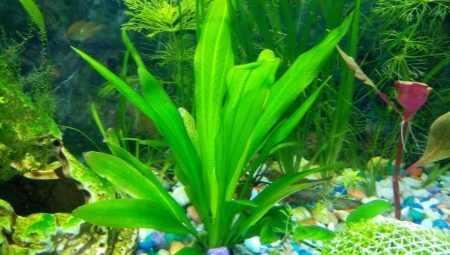Aquarium is an alternative to the small ocean that is located indoors. For a normal existence, its inhabitants must be provided with everything necessary. A popular resident of a residential reservoir is considered to be echinodorus, which under the right conditions and care, he will thank with the beauty of his appearance.
Features
Echinodorus is an aquarium plant from the family of chastukhovih, the description of which indicates the presence of 30 species of shallow and underwater types. In the natural environment, this representative of the flora is found starting from the center of America and ending with Argentina. In nature, it can grow in shallow rivers, swamps. Echinodorus is recognized as one of the most popular inhabitants of the aquarium.
This species of plant is considered a grassy aquatic perennial, but some subspecies can be cultivated as annuals. This marsh grass can reach a height of 10 to 70 centimeters, however, there are specimens with a height of 100 centimeters. The representative of the water world is characterized by a powerful root system, which makes it possible to quickly grow and develop. The stem is short or completely absent.
The foliage of echinodorus is sessile, it is collected in a basal outlet or is located on a long petiole. A lanceolate, ribbon-like, elliptical or heart-shaped form is inherent in a leaf plate. Usually the edges of the foliage are solid or wavy. The plates are painted green, red-brown or colorful.
In a perennial panicle or umbrella inflorescence, may consist of whorls in an amount of up to 18 pieces.Swamp grass blooms with white buds with a diameter of 1 to 6 millimeters. The pistil of the flower may be yellow or green.
Fruit - achene, characterized by the shape of a trihedral nut. A brown seed can have a spherical, elongated or ribbed shape, reaching about two millimeters in length.

Varieties
Currently, a large number of species of echinodorus are known. However, breeders do not stop and continue to amaze flora lovers with new varieties. There are plants that have been cultivated at home. Florists divide this perennial into the following types:
- underwater;
- floating;
- surface.
We list the most popular aquarium species of echinodorus.
- Narrow-leaved. The birthplace of this perennial is considered Brazil. The representative of the family is characterized by endurance and heat loving. It has long green foliage with pointed edges. The height of the marsh grass can reach about 0.5 meters, while the sheet has a width of 4 millimeters. The dimensions of the narrow-leaved echinodorus are considered favorable for planting in the aquarium on the back or in the center.
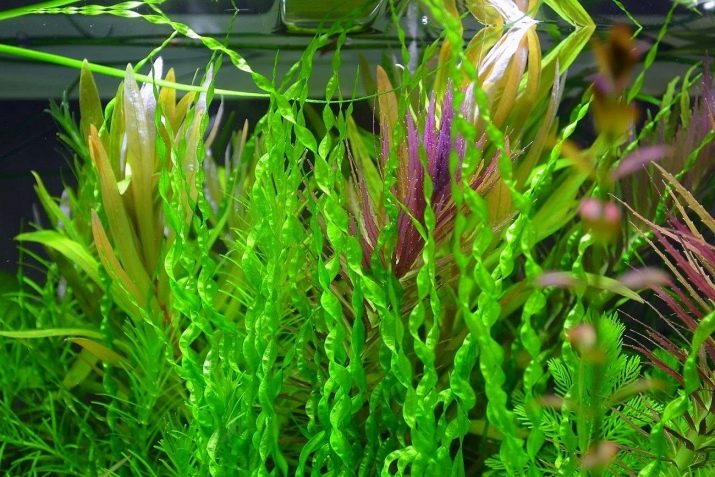
- Echinodorus Osiris. The main region of its growth is Brazil, namely: its southern part. This type of herbaceous bush has no stem. The foliage of the plant is wide, oblong. Leaflets are pulled up in sockets, at a young age they have a light brown color, in a more mature - dark green. The height of the bush from the tropics can reach up to 0.5 meters.

- Gentle. Echinodorus tenellus in the natural environment grows in the Amazon. This shrub is also called the "dwarf Amazon." The plant is characterized by unpretentiousness, it has delicate narrow leaves that look like grass. The height of the tender echinodorus usually reaches 7 millimeters. With sufficient light, the Amazonian representative of the tropics can acquire an emerald hue and grow well
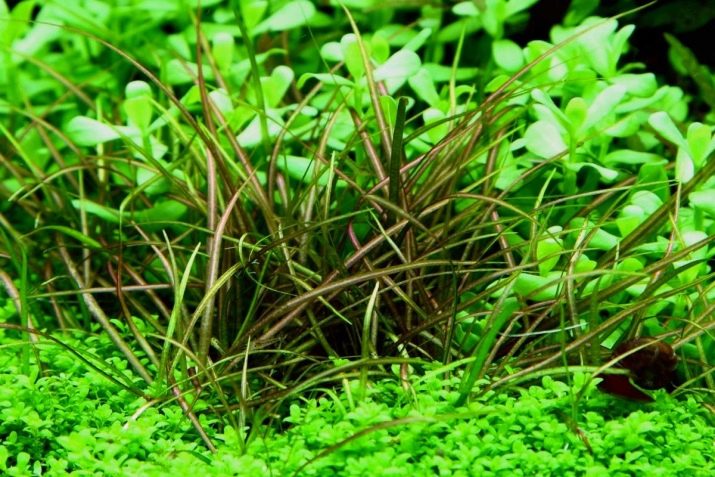
- Small-flowered. In the natural environment, this type of echinodorus is often found in Bolivia and Peru. Thanks to the heart-shaped shape of the foliage, the bush looks quite attractive. Spreading echinodorus in height can reach no more than 0.25 meters. The best option for planting a plant is considered the average plan or planting in a large tank.
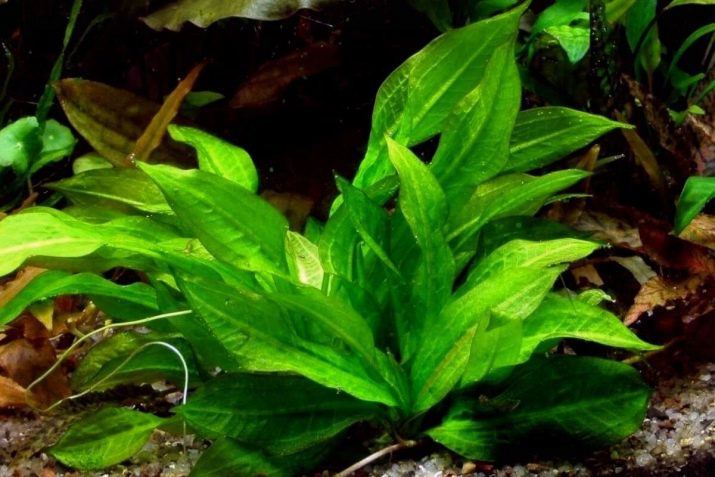
- Mottled. This echinodorus is considered one of the smallest broad-leaved representatives of its kind. At the bush, the rosette has a heart-shaped shape. This echinodorus grows to 0.15 meters, while its diameter cannot exceed 0.25 meters. This option is considered the most suitable for a small aquarium.
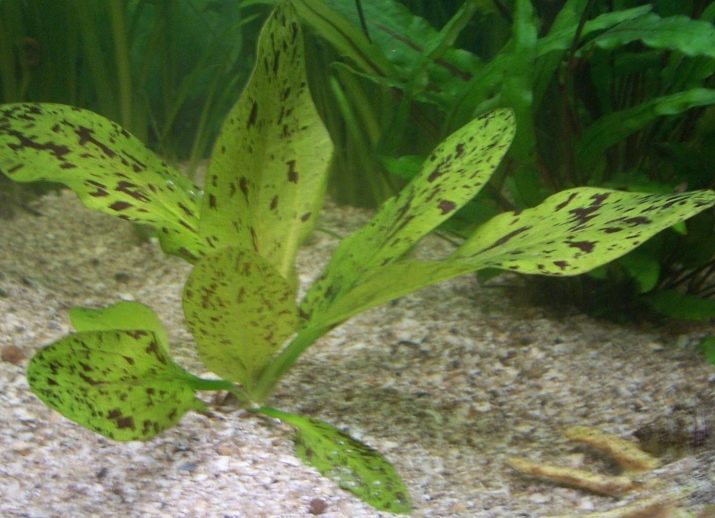
- Mercedes This hybrid is quite popular at present. Its characteristics are 5-6 stems, as well as elliptical foliage with an olive-yellow edging. Echinodorus reaches a height of about 0.35 meters, a width of 0.3 meters. The plant loves good lighting and warmth.

- Ruby. This type of echinodorus belongs to the unpretentious, hardy and very bright representatives of the flora. It is inherent in a crimson color. This plant has the ability to tolerate both mild and acidic environments. The length of the oblong ruby foliage is about 0.6 meters.
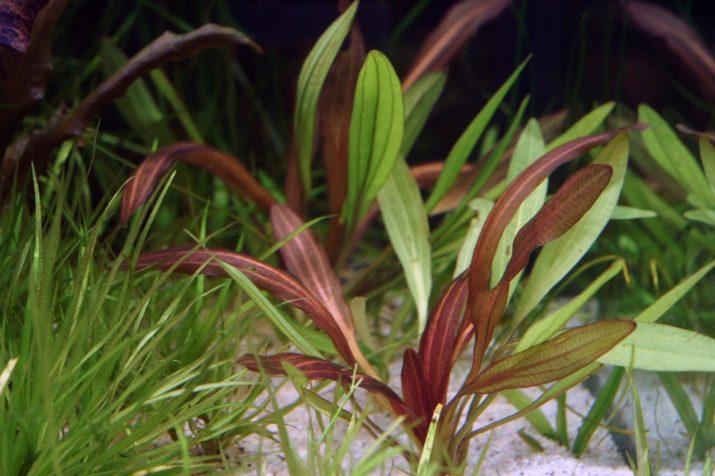
Growing conditions
Keeping echinodorus in the aquarium is not difficult, but some knowledge in this case is simply necessary. The substrate for the plant can be fine or medium gravel. The volume of sludge is not of particular importance, grass can exist in weakly and strongly silted soil. Subject to the planting of echinodorus in a new place clay should be added under the root system, this top dressing promotes rapid growth.
Water for perennial maintenance can be soft or hard, but within reason. The optimal pH is neutral or slightly alkaline. As well as echinodorus for a long time grow in water with an acidic rate.The most favorable temperature for normal existence is considered to be from 20 to 28 degrees heat. Under the condition of growing marsh grass in a tropical aquarium in which the temperature of the environment is from 24 to 26 degrees Celsius, you can make the bush winter mode, that is, lower the rate to 22 degrees for 45-60 days.
The plant does not show special requirements for lighting conditions. This indicator can be either strong or moderate, in both situations the echinodorus will feel great. And also it is worth remembering that the splendor of the bush can cause shading for other representatives of the flora in the aquarium.
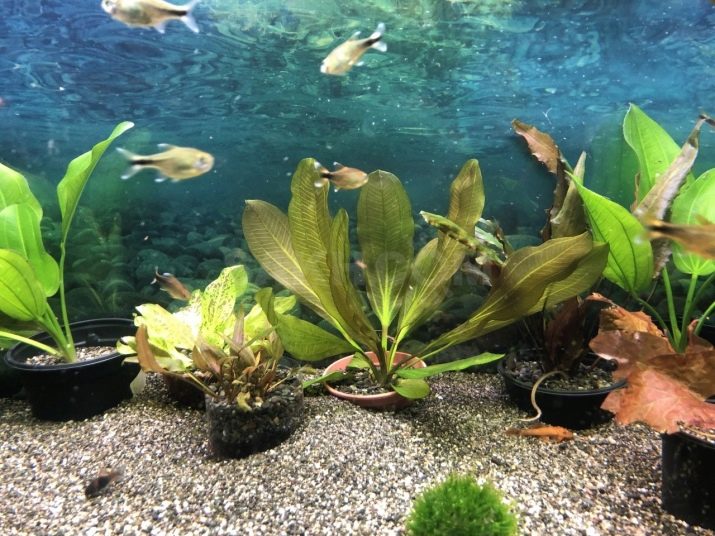
The difficulty of growing this perennial is that you need to constantly change the water in the aquarium, as well as rinse the substrate with a siphon. If you neglect these rules, you can notice how quickly the ecosystem grows old. If the echinodorus becomes small, slowly grows and throws leaves in the form of needles, we can say that the conditions of detention are unsatisfactory for the bush. Often the cause of these changes is rotting of the root system or inappropriate soil.
White rhizome is considered healthy. The rotten and diseased root is dark or half transparent.
In this situation, it is recommended to dig up a perennial, eliminate damaged roots and treat with birch charcoal. After this, the plant is planted back into the substrate, which is thoroughly washed.
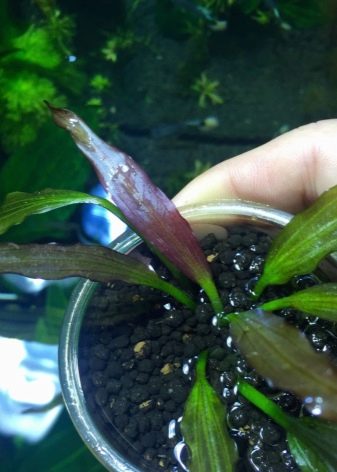
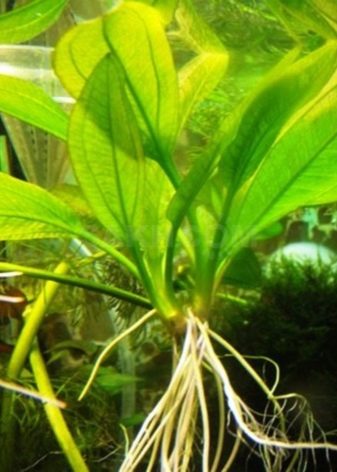
Breeding
Echinodorus, the content of which is carried out in the aquarium, can reproduce in different ways.
- Vegetative. In this case, the plant propagation occurs using stolons, that is, offspring. On the latter, a subsidiary representative is formed. Often, an aquarium resident continues his family using a creeping shoot.
- The seeds. There are some varieties of echinodorus, the reproduction of which is possible only with the help of seeds. This option is carried out only after flowering and pollination, the optimal option of which is considered to be cross. Germination of seeds is not difficult, but not characterized by good germination. The disadvantage of this method of reproduction can be called a high risk of pollination.
- Division of the root system. Some echinodorus can breed exclusively in this way. This option can be called the most effective, since a new plant forms much faster than in previous cases.
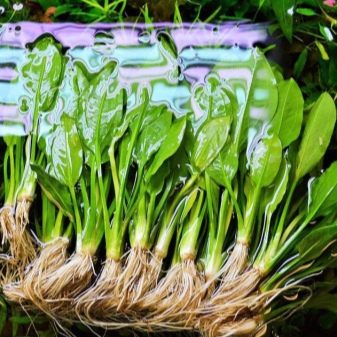
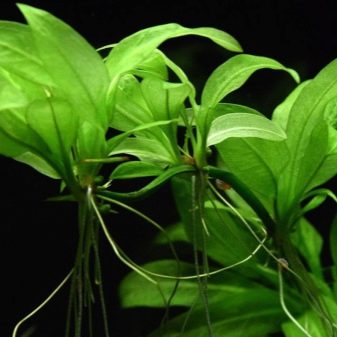
Possible difficulties
In order for the plant to feel good in the aquarium, the owner should not forget about the following activities, which bring some difficulties:
- regular change of water;
- the need for bright lighting;
- water saturation with carbon dioxide, with a lack of which calcium will accumulate on the foliage of the plant, which is harmful to all living things in the aquarium;
- the substrate must be washed regularly once a month with a siphon;
- feeding perennial;
- young ampullariums and ancistruses should live in the aquarium, which help to maintain clean leaves;
- spring transplantation of marsh grass, which is carried out once a year, is accompanied by a renewal of the plant.
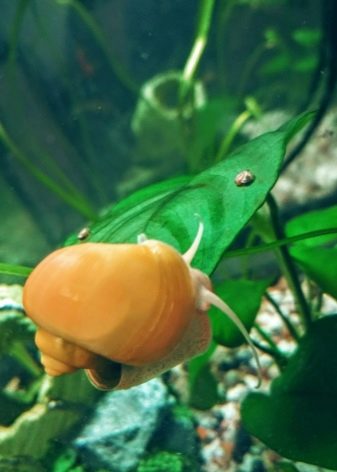
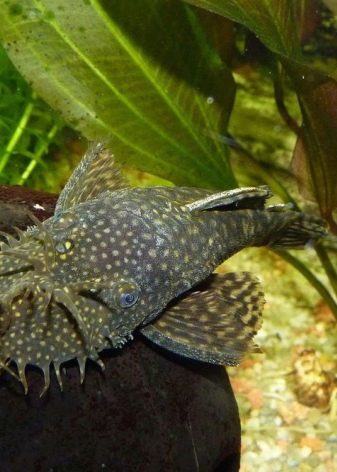
The adverse conditions for the cultivation of echinodorus include the following:
- old sour water with a high percentage of organic matter;
- low light;
- low percentage of carbon dioxide in water;
- soil with too fine or silty texture.
Echinodorus is a common type of plant that is used to design an aquarium. Perennial provides assistance in designing a complete ecosystem.
The popularity of this type of marsh grass is due to its unpretentiousness, interesting external characteristics, and high ability to adapt to various environmental conditions.
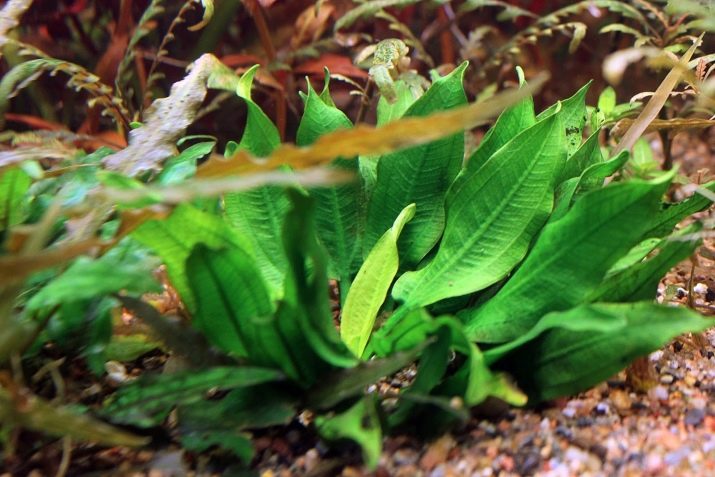
See how to contain echinodorus in the next video.
